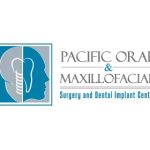How Regular Dental Exams Can Detect Early Signs of Gum Disease
- Why Regular Dental Exams Are Important
- Gum Disease and Its Early Signs
- How Dentists Detect Early Signs of Gum Disease
- Real-Life Case Studies: Detecting Gum Disease Early
- How to Maintain Healthy Gums
1. Why Regular Dental Exams Are Important
Regular dental exams are a crucial part of maintaining your oral health, and one of the most significant benefits of these visits is that they allow your dentist to detect early signs of gum disease. Gum disease, if left untreated, can lead to serious health issues like tooth loss, bone damage, and even heart disease. By visiting your dentist every six months or as recommended, you are giving yourself the best chance to catch any potential issues before they become more severe.
During a routine dental exam, your dentist doesn't just check for cavities or clean your teeth. They also evaluate your gums, looking for signs of swelling, redness, or tenderness that could indicate gum disease. Regular exams allow for early intervention, which can save both your teeth and your health in the long run.
2. Gum Disease and Its Early Signs
Gum disease, also known as periodontal disease, starts as a mild condition called gingivitis. Gingivitis is usually caused by plaque buildup on the teeth, leading to inflammation of the gums. If not treated, gingivitis can progress to periodontitis, which can cause tooth loss and damage to the surrounding bone structure.
Some early signs of gum disease include:
- Red, swollen, or bleeding gums: If your gums bleed when brushing or flossing, it could be an early sign of gum disease.
- Persistent bad breath: Known as halitosis, this can be a result of bacteria that thrive on plaque and tartar buildup.
- Sensitive or receding gums: Gum recession can cause tooth sensitivity and is often linked to advanced gum disease.
- Loose teeth or changes in bite: This is a sign of more advanced gum disease, affecting the supporting structures of the teeth.
Recognizing these signs early on can make a significant difference in preventing more severe damage. A dental exam helps to identify these symptoms and provide timely treatment.
3. How Dentists Detect Early Signs of Gum Disease
During a regular dental exam, your dentist uses several techniques to detect early signs of gum disease. These may include:
3.1 Visual Inspection
Your dentist will look for signs of gum disease by examining the color and texture of your gums. Healthy gums should be pink and firm. If your gums are red, swollen, or bleed when touched, your dentist will investigate further.
3.2 Probing
During your exam, your dentist may use a special tool called a periodontal probe to measure the depth of the spaces between your gums and teeth (called pockets). Healthy pockets are shallow, but deeper pockets indicate that your gums are pulling away from your teeth, a sign of gum disease.
3.3 X-Rays
In some cases, your dentist may recommend taking dental X-rays. X-rays help to assess the extent of bone loss around the teeth, which is an important indicator of gum disease progression.
3.4 Evaluating Your Medical History
Finally, your dentist will consider your medical history, including any underlying conditions that might increase your risk of gum disease, such as diabetes, smoking, or medication use.
4. Real-Life Case Studies: Detecting Gum Disease Early
Let's take a look at some real-life cases where regular dental exams helped detect early signs of gum disease:
4.1 Emma’s Story: Early Detection Saves Her Smile
Emma, a 32-year-old woman, had a routine dental exam and was surprised when her dentist noticed slight gum inflammation. She didn’t have any pain or noticeable issues, but after a few tests, her dentist diagnosed early-stage gingivitis. Emma started a treatment plan that included better oral hygiene and regular cleanings, which stopped the disease from progressing. Without the early detection, Emma might have lost several teeth by the time she noticed the problem.
4.2 John’s Experience: Gum Disease Diagnosis After Bleeding Gums
John, a 45-year-old man, had been noticing his gums bleeding when brushing for several weeks but didn’t think much of it. His dentist quickly diagnosed him with early-stage periodontitis after an exam. John began a course of deep cleaning (scaling and root planing) and followed up with routine exams, successfully managing the condition and preventing it from advancing further.
5. How to Maintain Healthy Gums
While regular dental exams are vital for detecting gum disease early, maintaining healthy gums is also crucial. Here are some simple steps to help keep your gums healthy:
- Brush twice a day: Use fluoride toothpaste and a soft-bristled toothbrush to remove plaque and prevent gum disease.
- Floss daily: Flossing helps remove plaque from between your teeth and along the gumline, areas your toothbrush can’t reach.
- Visit your dentist regularly: Schedule exams and cleanings every six months, or as recommended by your dentist.
- Eat a balanced diet: Eating a diet rich in vitamins and minerals helps keep your gums strong and healthy.
- Don’t smoke: Smoking increases your risk of gum disease by impairing your gum tissue’s ability to heal.
By taking these steps, you can maintain healthy gums and prevent the onset of gum disease.







 Metro Smiles Gage Park2.0 (36 review)
Metro Smiles Gage Park2.0 (36 review) Gentry Dentistry4.0 (164 review)
Gentry Dentistry4.0 (164 review) Pacific Oral & Maxillofacial Surgery and Dental Implant Center4.0 (66 review)
Pacific Oral & Maxillofacial Surgery and Dental Implant Center4.0 (66 review) Gardena Dental Care4.0 (416 review)
Gardena Dental Care4.0 (416 review) Inglewood Family Dentistry5.0 (118 review)
Inglewood Family Dentistry5.0 (118 review) Clemente Orthodontics of Woodcliff Lake5.0 (94 review)
Clemente Orthodontics of Woodcliff Lake5.0 (94 review) The Importance of Oral Health Education During Pregnancy for a Healthy Pregnancy
The Importance of Oral Health Education During Pregnancy for a Healthy Pregnancy Best Tips for Brushing Your Teeth Properly for Healthy Gums: Essential Techniques for Oral Health
Best Tips for Brushing Your Teeth Properly for Healthy Gums: Essential Techniques for Oral Health Why Skipping Dental Checkups Can Lead to Bigger Oral Health Problems
Why Skipping Dental Checkups Can Lead to Bigger Oral Health Problems Advantages of Porcelain Dental Restorations
Advantages of Porcelain Dental Restorations How Can Diabetes Cause Tooth and Gum Problems? Preventing and Managing Oral Health Issues
How Can Diabetes Cause Tooth and Gum Problems? Preventing and Managing Oral Health Issues Healthy Habits for Promoting Good Oral Health and Hygiene: Tips for a Healthy Smile
Healthy Habits for Promoting Good Oral Health and Hygiene: Tips for a Healthy Smile